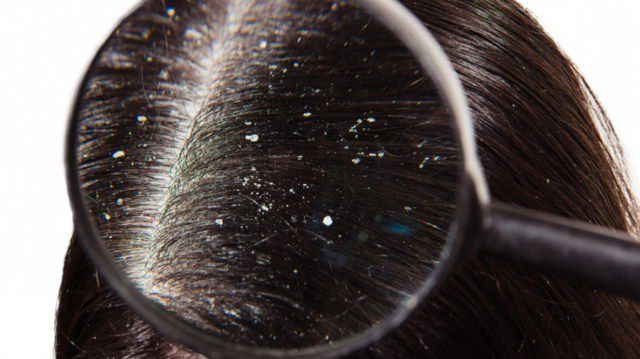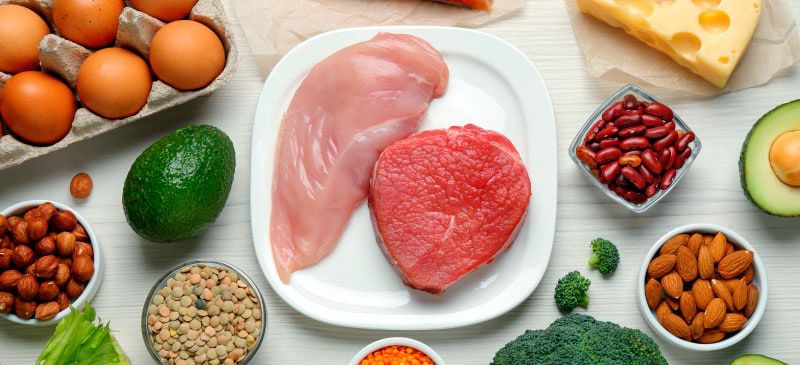Łupież tłusty a łysienie - Wpływ na włosy i sposoby leczenia
What are the health benefits of lysine?
There are various health benefits of lysine and lysine supplements, including improving cold sores, reducing blood pressure, and preventing the symptoms of lysine deficiency.
Lysine is one of the essential amino acids, which are those that the body cannot make and that people need to obtain from dietary sources.
In this article, we discuss lysine and look at the benefits and risks of lysine supplements and how to use them.
The medical community defines lysine as an essential amino acid because, unlike some other amino acids, the body cannot synthesize it. As a result, people need to include it in their diet.
The human body needs lysine for healthy functioning. It is a crucial component of proteins that play a role in helping body tissue grow and recover from damage. Other benefits of lysine include:
- helping the body absorb calcium, iron, and zinc
- promoting collagen growth
- helping produce enzymes, antibodies, and hormones
- supporting the immune system
When people do not get enough lysine, they may experience the following symptoms:
- fatigue
- poor concentration
- irritability
- nausea
- red eyes
- hair loss
- anorexia
- inhibited growth
- anemia
- problems with the reproductive system
Below, we discuss the possible health benefits of lysine supplements.
Jak pozbyć się łupieżu? 5 domowych sposobów na łupież
Łupież to duży problem natury nie tylko estetycznej, ale też zdrowotnej. Skąd się bierze? Jak mu przeciwdziałać domowymi sposobami i przede wszystkim – jak skutecznie się go pozbyć? Na te i inne pytania odpowiadamy w dzisiejszym artykule.
Łupież to łuszczący się naskórek głowy, który widoczny jest na włosach, ale może też opadać na ramiona, szyję czy kark. Charakterystycznym objawem łupieżu jest intensywny świąd skóry głowy, któremu towarzyszą osypujące się drobinki lub duże płaty naskórka, a także łojotok.
Do najczęstszych przyczyn występowania łupieżu możemy zaliczyć:
- Przesuszenie skóry głowy.
- Nadwrażliwość lub alergię na kosmetyki do pielęgnacji włosów.
- Niedokładne spłukiwanie szamponów lub odżywek.
- Zbyt silne pocieranie skalpu podczas mycia i stylizacji włosów.
- Używanie dużej ilości obciążających środków przy stosunkowo rzadkim oczyszczaniu samego skalpu.
- Przegrzanie skóry głowy (suszarka, mycie włosów w bardzo ciepłej wodzie).
- Zbyt rzadkie mycie głowy.
- Kontakt z wodą chlorowaną.
- Niektóre choroby, np. łuszczyca czy łojotokowe zapalenie skóry.
What Is Lysine?
Lysine is an essential amino acid. Many people know that several amino acids are known as the “building blocks of protein” and are needed in order for a huge number of internal functions to work properly, including growth.
L-lysine was first discovered by a German scientist known only as Dreschel in 1889, who was able to isolate the amino acid from casein, or milk protein. The exact structure of the molecule was recorded just three years later.
Of the few hundred amino acids found in nature, 20 are necessary for protein creation and growth, and only 10 of those 20 can be produced by the body. The remaining 10 are known as “essential” amino acids because humans must consume them for proper health.
Amino acid deficiencies cause a degradation of internal cells and can lead to huge problems, so it’s important to get enough of them in your diet. It’s common to be deficient in lysine and glutamine, in particular.
Essential amino acids are most often stereoisomers, meaning they exist in two variations that are identical to one another as mirror images. There are both D- and L- forms of these amino acids, and the L- form is used in protein synthesis and therefore the form found in food and supplements. Because of this, most people simply refer to this nutrient as “lysine” for short.
There are many incredible L-lysine benefits , from its use as a common treatment for cold sores to a potential anti-anxiety supplement. As is true with most nutrients available in supplement form, it can be taken orally but is absorbed best into the body when consumed through dietary sources. It’s found in large amounts in various kinds of meat, beans, cheeses and eggs.
Kto najczęściej cierpi na łupież tłusty?
Łupież tłusty najczęściej dotyka osoby w okresie dojrzewania i młodych dorosłych, co jest związane z intensywnymi zmianami hormonalnymi, zachodzącymi w tym czasie. Nadmierna aktywność gruczołów łojowych w tym okresie życia jest główną przyczyną występowania tego typu łupieżu. Jednak problem ten może dotyczyć osób w każdym wieku, zwłaszcza tych, które mają genetyczne predyspozycje do nadmiernej produkcji sebum.
Osoby z łojotokowym zapaleniem skóry, które jest powiązane z nadmierną produkcją sebum, są również bardziej narażone na rozwój łupieżu tłustego. Ponadto osoby pracujące w stresujących warunkach lub te, które nie dbają odpowiednio o higienę skóry głowy, mogą doświadczać nasilonych objawów łupieżu tłustego.
Ważne jest, aby osoby cierpiące na łupież tłusty nie tylko stosowały odpowiednie metody leczenia, ale także edukowały się na temat przyczyn i sposobów zapobiegania temu problemowi. Regularne wizyty u specjalisty i stosowanie się do jego zaleceń mogą znacznie poprawić jakość życia i zmniejszyć ryzyko nawrotów.

Jak skutecznie pozbyć się łupieżu?
Jak zwalczyć łupież? Wszystko zależy od jego odmiany, stopnia zaawansowania i przebiegu choroby. Sucha, swędząca skóra głowy = pielęgnacja na najwyższym poziomie. Aby zniwelować nieprzyjemne uczucie swędzenia i podrażnienia trzeba zapewnić skórze odpowiedni poziom nawilżenia. Na rynku są dostępne preparaty w najróżniejszych postaciach od suplementów, przez wcierki maski i wiele innych, które regularnie stosowane zapewnia skórze głowy optymalną kondycję. Oto garść sprawdzonych sposobów na najpopularniejsze rodzaje łupieżu
Jak zwalczyć tłusty łupież? Podstawą w przypadku łojotokowej odmiany będzie odpowiednia pielęgnacja. Oprócz odświeżającego szamponu na łupież, takiego jak szampon z lasu Opcja Natura, przyda się odżywka do włosów przetłuszczających się, np. marki Yope o zapachu świeżej trawy. Konieczne będzie też złuszczanie skóry głowy. Po peeling trychologiczny warto sięgać raz na dwa tygodnie. Dobrze również od czasu do czasu umyć włosy i skalp szamponem z mocno oczyszczającą formułą. Taki produkt pomoże pozbyć się niedomytych resztek innych kosmetyków pielęgnacyjnych.
Co stosować na suchy łupież? Przyczyną suchego łupieżu jest najczęściej silne przesuszenie skóry głowy. W tym wypadku pielęgnacja powinna się zatem opierać na nawilżeniu i ukojeniu podrażnionego skalpu. Idealnie sprawdzi się zestaw kosmetyków BJO z wegańską recepturą, naturalnymi składnikami i kojącym ekstraktem z zielonej herbaty.
Jak wyleczyć łupież na ciele? Skórę dotkniętą łupieżem należy pielęgnować z użyciem delikatnych kosmetyków nawilżających i natłuszczających. Dobrze sprawdzą się emulsje do mycia i balsamy emolientowe, które złagodzą ewentualny świąd. Jeśli mimo zastosowania kuracji nie zauważymy poprawy, warto zasięgnąć porady lekarza.

 U nas zapłacisz kartą
U nas zapłacisz kartą
